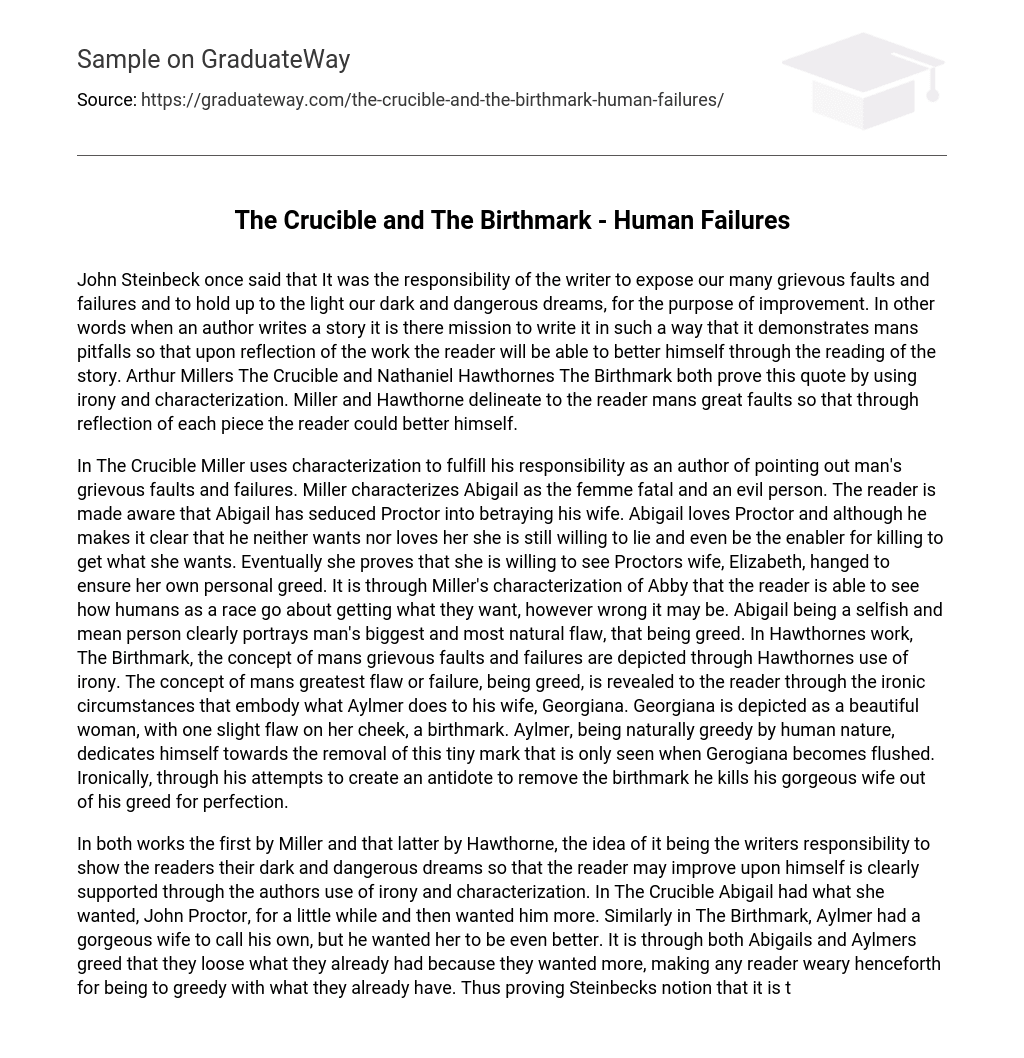John Steinbeck argues that writers have a responsibility to uncover and highlight humanity’s flaws, failures, and dangerous desires in order to promote self-improvement. Essentially, authors present stories that expose our weaknesses so readers can learn from them. Arthur Miller’s The Crucible and Nathaniel Hawthorne’s The Birthmark both exemplify this idea through irony and characterization. By showcasing the extent of human faults in their works, Miller and Hawthorne aim to inspire readers to reflect on these writings for personal growth.
In The Crucible, Arthur Miller uses characterization to fulfill his role as an author by shedding light on the significant faults and deficiencies of humanity. One particular character, Abigail, is portrayed as both a femme fatale and a malicious individual. It becomes apparent to readers that Abigail has seduced Proctor into betraying his wife. Despite Proctor explicitly rejecting her love and desires, Abigail remains willing to lie and even facilitate murder in order to achieve her goals. Ultimately, she demonstrates her readiness to witness the execution of Proctor’s wife, Elizabeth, solely for personal gain. Through Miller’s portrayal of Abby, readers can comprehend how humans often pursue their desires without any consideration for moral principles.
In Nathaniel Hawthorne’s The Birthmark, the theme of humanity’s grave faults and failures is conveyed through irony. The story exposes mankind’s primary flaw – greed – through the ironic circumstances surrounding Aylmer’s treatment of his wife, Georgiana. Georgiana is depicted as a beautiful woman with only one flaw: a birthmark on her cheek that only becomes visible when she blushes. Aylmer, consumed by his inherent greediness, becomes fixated on removing this minor imperfection.Ironically enough, in his pursuit of perfectionism he unknowingly causes the death of his beloved wife while attempting to create a remedy for eliminating the birthmark.
Both Miller’s work, The Crucible, and Hawthorne’s work, The Birthmark, support the idea that writers have a responsibility to reveal readers’ dark and dangerous dreams in order to aid their self-improvement. The authors achieve this through their use of irony and characterization. In The Crucible, Abigail initially gains what she desires – John Proctor – but her greed drives her to yearn for more. Similarly, Aylmer in The Birthmark possesses a beautiful wife but wishes for her to be even more perfect. Both characters lose what they already have due to their insatiable desires, cautioning readers against excessive greed. These examples illustrate Steinbeck’s belief that it is the duty of authors to showcase others’ mistakes, so that readers may avoid repeating them.





